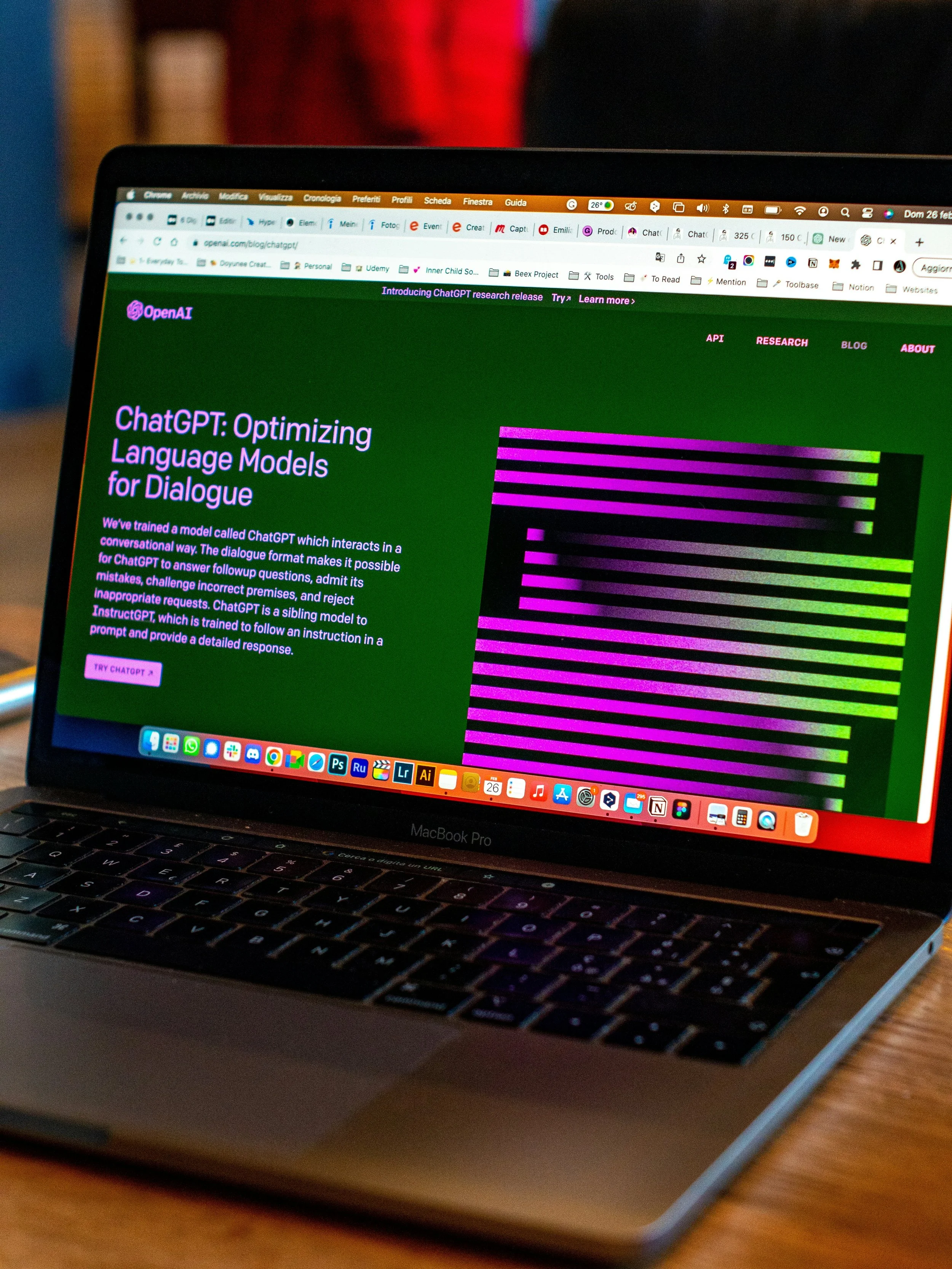Profit Over Progress: The Gilded Age of AI in Education
AI in Education – The Corporate Capitalist Playbook
“AI has entered our classrooms as a product of corporate capitalism”
You walk into a classroom where one student uses an AI tutor personally tailored to their learning style, while another waits for teacher attention that never comes. Where one school district implements comprehensive AI-powered educational systems, while another can't afford even basic technological infrastructure. Where student data flows freely into corporate databases, analyzed and monetized without meaningful consent.
In our rush to innovate education through artificial intelligence, have we we've prioritized profit over pedagogy?
It sounds like cynicism. But this reality isn't hypothetical.
AI has entered our classrooms not just as a neutral tool but as a product of corporate capitalism, transforming how students learn, how teachers teach, and how educational resources are allocated. The critical question isn't whether AI will change education, it's whether those changes will reinforce existing inequalities or help overcome them. Without intentional governance and public action, AI in education risks becoming another vehicle for systemic inequality, following the same patterns that have shaped healthcare, housing, and other essential services in market-driven societies.
How Profit Motives Shape AI's Role in Classrooms
The integration of AI into education follows familiar corporate strategies designed to maximize return on investment rather than educational outcomes:
Tiered Access Models create digital educational castes. Platforms like Coursera or Khan Academy offer basic content freely but lock transformative features such personalized tutoring, advanced coursework, and certifications behind paywalls. Families with financial resources purchase educational advantages while students from lower-income backgrounds rely on stripped-down versions with limited functionality. This digital stratification mirrors and amplifies existing socioeconomic divides.
Data Exploitation turns students into products. Google Classroom, Turnitin, and similar platforms harvest extensive student data, with contracts often allowing monetization through partnerships with college recruiters, textbook publishers, and other third parties. A 2023 analysis of 100 popular EdTech tools found 73% shared student data with marketing partners, despite vague privacy policies. Students become unwitting participants in a surveillance economy, their learning behaviors commodified without meaningful consent.
Market Segmentation creates separate and unequal digital experiences. Premium AI systems market "enterprise" versions to affluent private schools, while public schools in underserved communities receive outdated, ad-supported software with minimal personalization features. The Education Trust reported in 2023 that 60% of low-income school districts use AI tools with either advertising or extensive data-tracking as payment for "free" access.
Lobbying for Influence shapes policy to favor corporate interests over student needs. EdTech giants like Pearson and Byju's invest millions in lobbying efforts to weaken student privacy protections while simultaneously pushing for AI adoption mandates that lack equity funding. The result? Policies that prioritize corporate-friendly "innovation" while leaving equitable access as an afterthought. Think the recent executive order.
These strategies mirror corporate capitalism's historical playbook in other essential sectors that private potential public goods while externalizing social costs, all while promising innovation that will eventually "trickle down" to marginalized communities.
Why AI Will Deepen the Education Gap
Without intervention, AI in education will likely widen rather than bridge educational divides:
Current Market Trends reveal where investment flows. HolonIQ reports that over $22 billion has poured into AI EdTech startups since 2020, with 70% focused on premium business-to-consumer products like Duolingo Max or premium tutoring services. Venture capital demands substantial returns, incentivizing companies to exploit high-income markets rather than address educational inequities. When quarterly profits drive development, educational equity becomes an afterthought.
Regulatory Gaps leave vulnerable populations unprotected. No comprehensive federal laws restrict algorithmic bias in educational AI or mandate equitable access standards. States like Texas have authorized AI-powered essay grading despite documented error rates that disproportionately harm English language learners and students with non-standard dialects. Without guardrails, AI systems amplify existing biases under the illusion of technological objectivity.
Digital Divide issues remain unresolved at the most basic level. Pew Research (2023) found 30% of low-income households lack reliable broadband access, fundamentally limiting their ability to use AI-powered educational resources. When schools assign homework requiring AI applications, students in rural areas, tribal lands, and underserved urban areas face "homework gaps" that no algorithm can bridge.
Paths to Equity
Despite these concerning trends, several countervailing forces offer potential paths toward more equitable AI implementation:
Public Advocacy has begun challenging AI's corporate implementation. Grassroots groups like the Student Data Privacy Project have successfully pushed for restrictions on AI surveillance in several large school districts. Parent-teacher coalitions in Chicago and Los Angeles have demanded transparent AI policies and equitable implementation plans. However, these successes remain geographically limited and many rural and underfunded districts often lack organized advocacy resources to effectively challenge corporate interests.
Open-Source Initiatives present alternatives to corporate models. Non-profits like Learning Equality and Connected Classroom offer offline-capable AI tools designed specifically for low-resource settings, while LibreTexts develops open AI curricula accessible without data harvesting. Yet these initiatives struggle against corporate platforms that dominate through massive marketing budgets and seamless integration with existing school systems. Good technology alone cannot overcome structural power imbalances.
Policy Interventions show promise but face significant obstacles. California's Student Data Privacy Protection Act (2022) restricts the sale of educational data, while the proposed federal "AI Equity in Education Act" would require algorithmic impact assessments before school implementation. However, these efforts face intense lobbying from EdTech firms and partisan gridlock that weakens their potential impact. Democratic governance struggles to keep pace with technological innovation and corporate influence.
The Crossroads for AI's Classroom Legacy
Whether AI becomes a force for educational liberation or further stratification hinges not on the technology itself, but on whether democratic values or profit motives dictate its deployment and design. We stand at a critical juncture similar to the Gilded Age industrialization. Technological revolutions demand ethical guardrails to ensure their benefits extend beyond those already privileged.
Creating a more equitable future for AI in education requires concrete action:
Public Funding through federal grants specifically targeting equitable AI access and implementation in underserved communities.
Regulatory Courage to establish laws that treat educational data as a protected public good rather than a corporate asset.
Community-Centered Design that involves teachers, students, and families in developing AI tools that address their actual needs rather than presumed market opportunities.
Without these interventions, AI will inevitably codify corporate capitalism's inequalities into the next generation's educational experience, not because technology itself dictates this outcome, but because our economic system does. The question isn't whether AI will transform education, but whether we have the collective will to ensure that transformation serves democratic rather than market values.
References
Human Rights Watch. (2022). How dare they peep into my private life?: Children's rights violations by governments that endorsed online learning during the Covid-19 pandemic. https://www.hrw.org/report/2022/05/25/how-dare-they-peep-my-private-life/childrens-rights-violations-governments
Internet Safety Labs. (2023). National education technology unsafety report. https://internetsafetylabs.org/reports/2023-education-technology-unsafety-report
Common Sense Media. (2023). 2023 state of kids' privacy report: EdTech edition. https://www.commonsensemedia.org/kids-privacy-report-2023
Education Trust. (2023). Digital divide: Technology access in high-poverty schools. https://edtrust.org/resource/digital-divide-technology-access-in-high-poverty-schools/
U.S. Department of Education. (2024). Educational technology access and usage in high- and low-poverty schools (Report No. 2024-011). https://www.ed.gov/reports/edtech-access-usage-2024
HolonIQ. (2023). Global EdTech venture capital report: 2020-2023. https://www.holoniq.com/notes/global-edtech-venture-capital-report-2023/
Pew Research Center. (2023). Internet/broadband fact sheet. https://www.pewresearch.org/internet/fact-sheet/internet-broadband/
MacMahon, S., Yen, J., Gao, P., & Lepp, J. (2024). Generative AI in K-12 education: Challenges, opportunities, and educator responses. Computers and Education: Artificial Intelligence, 5, 100140. https://www.sciencedirect.com/science/article/pii/S2666920X24000560
California Department of Education. (2022). Student Data Privacy Protection Act: Implementation guidelines. https://www.cde.ca.gov/privacy/studentdataprivacy
Note to Readers
The claim that "73% of popular EdTech tools shared student data with marketing partners" combines findings from Internet Safety Labs (2023) and Common Sense Media (2023) reports. The specific percentages vary slightly between reports, with the consolidated figure representing the average across multiple privacy studies published in 2023.
Disclaimer: This is a complete original work. This article’s research was conducted with the assistance of EdConnect, an optimized Generative A.I for educational research and evolving best practices. © 2025 The Connected Classroom. All rights reserved.







